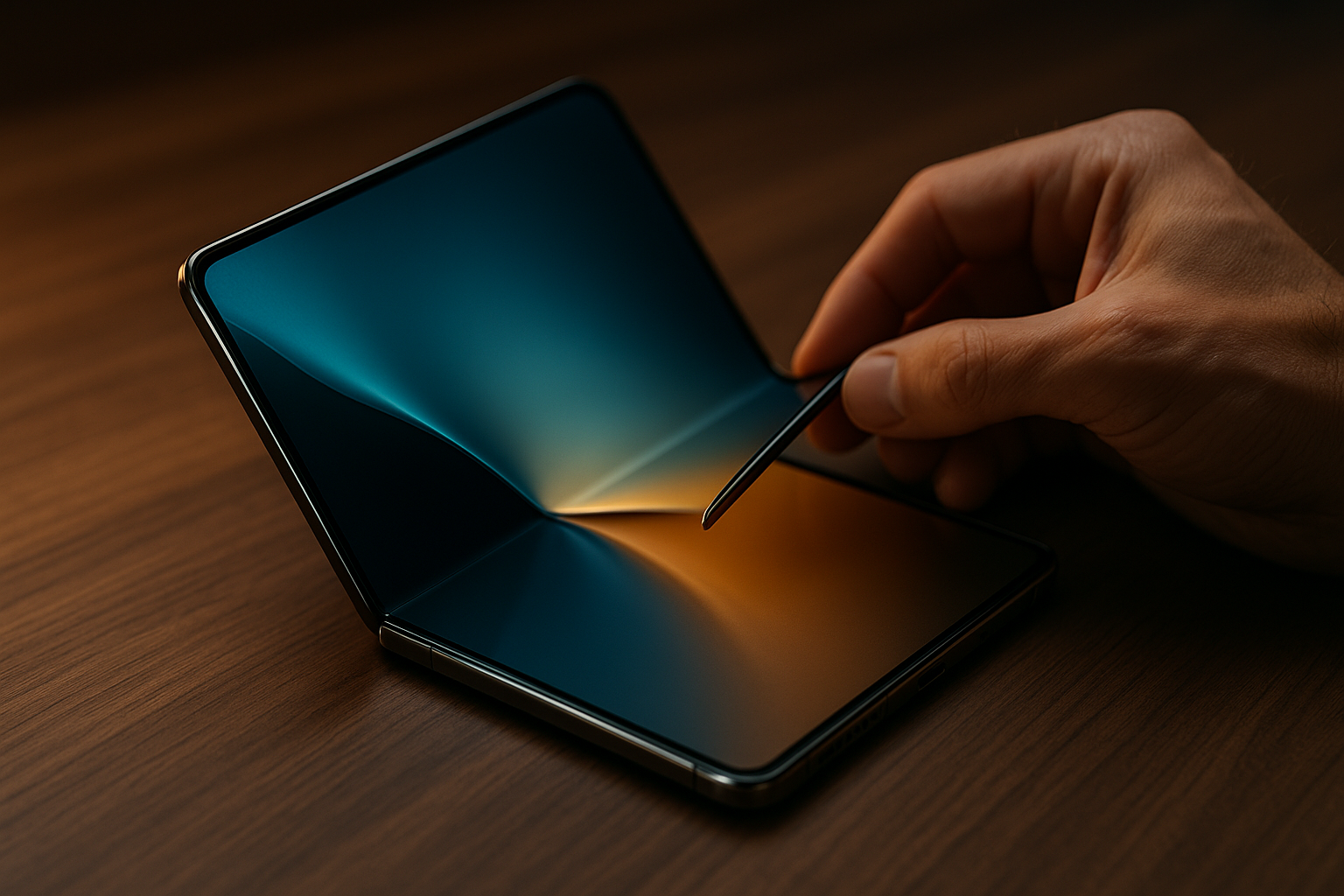"From Concept to Consumer: The Journey of Foldable Tech"
Foldable technology is a burgeoning field within the tech, computers, and electronics category. The concept of folding tech is not entirely new; it has been a part of sci-fi and futuristic narratives for decades. But it's only now that we are witnessing its transition from concept to actual consumer products.

The Evolutionary Leap
The leap from rigid to flexible screens was made possible thanks to the development of organic light-emitting diodes (OLEDs). These lights, made from carbon-based compounds, emit light when electricity is applied. They are flexible, thin, and can be put on plastic, metal, or glass substrates, making them ideal for foldable screens. The idea of a foldable device was further propelled by advancements in manufacturing techniques and materials science, particularly the development of flexible polymers and bendable metals.
Foldable Tech in the Modern Market
Today, foldable technology is not just a concept but a reality. Tech giants like Samsung and Huawei have already launched their foldable phones in the market. Samsung’s Galaxy Fold and Huawei’s Mate X are two prominent examples of this tech taken to fruition. These devices are priced at the higher end of the market, with Samsung’s Galaxy Fold retailing at $1,980 and Huawei’s Mate X at $2,600.
These products have generated a lot of buzz, but their impact on the market has been somewhat muted, mainly due to their high price points and concerns about durability. Nonetheless, they represent a significant step forward in the evolution of mobile devices and open up a world of possibilities for future tech.
The Challenges and Potential of Foldable Tech
While foldable tech has made substantial strides, it is not without its challenges. Durability is a significant concern, as evidenced by the issues faced by Samsung with the initial launch of the Galaxy Fold. The plastic screens of these devices are prone to scratches, and the folding mechanism can wear out over time.
But despite these challenges, the potential of foldable tech is immense. It promises a future where our devices are not limited by their form factor. Imagine a world where you can fold your tablet into a phone, unfold your phone into a gaming console, or even roll up your TV and take it with you. The possibilities are endless, and they could redefine how we interact with our devices.
The Future of Foldable Tech
Looking forward, foldable tech could become more prevalent as the technology matures and prices come down. Tech companies are already working on second and third-generation foldable devices, with improved durability and more affordable prices. Additionally, foldable tech is not just limited to phones and tablets. We’re seeing it being explored in other domains as well, like foldable TVs and even foldable PCs.
In conclusion, foldable tech is an exciting development in the tech world. It offers a glimpse into a future where our devices are not constrained by their physical form. While there are challenges to overcome, the potential of this technology is immense, and it’s something that tech enthusiasts and consumers alike should keep an eye on.






